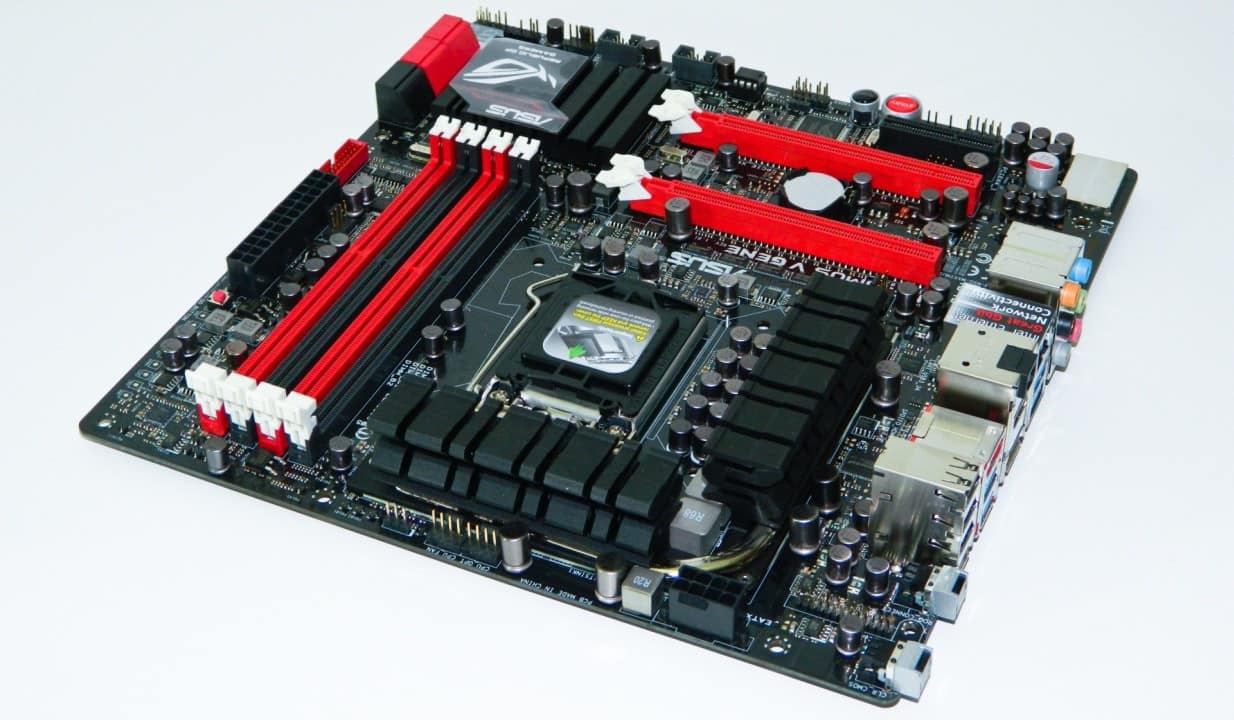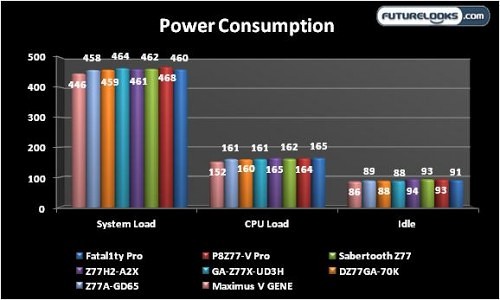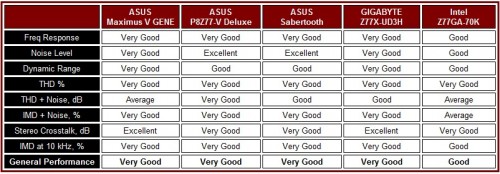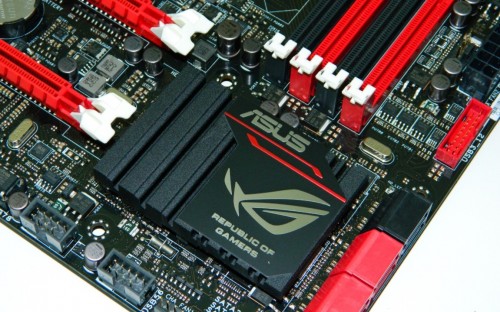Power Consumption
Comparing motherboard power consumption is not as easy as it seems. Every board has different BIOS settings and physical components. While the difference is minimal among like chipset series boards, it does vary among manufacturers. Most boards are set up to run optimally. Some boards are meant for efficient power consumption while others like the GENE tuned for high performance. Thus, all boards are left to their “normal” factory defaults. Keep this in mind as we weigh the data.
The system was allowed to sit idle and load for 60 minutes which is more than enough to record wattage being consumed. As you can see, the GENE doesn’t consume a lot more power when idle. Because it is a motherboard with performance BIOS tuning, it consumes only a little bit more under stock and overclocked loads. It’s not much higher at all and credits the platforms efficient components.
Audio Performance
The GENE’s audio components are separated on the PCB with the exception of the traces that carry power to the caps. This kind of implementation should be better than average performance. I took the time fine tuning the GENE’s audio settings in order to find optimal volume levels. Here are the results.
The SupremeFX III does a fine job of producing a surprising amount of volume along with clarity. If you need it loud and clear, expect to get it. The separating of components favor the board eliminating stereo cross talk (channel leaking in to each other) scoring Excellent. The only issue here is the average THD+Noise dB indicating a possible, though menial, limitation of the Realtek codec and amplifier. Can you tell when the system is in the midst of a battle? No, not at all.
Final Thoughts
What attributes make a motherboard an ROG? If it’s the higher quality components, proven digital power management, efficiency, stability, high performance, expansion needed to last, and overclocking, then the ASUS Maximus V GENE is worthy of wearing the ROG badge. It’s the best performance micro-ATX built for gaming, yet it will likely benefit particularly picky media creators as well. It also rivals most full sized ATX boards currently available even with their fancy Thunderbolt ports.
While the transistor gods assure us that all ROG are equal or better, it’s their pricing that sometimes make them an elusive choice. Prices reach $379.99 for the Extreme, $359.99 for the Formula ThunderFX, and $309.99 for the Formula. This makes the $199.99 GENE an extremely attractive all around gaming motherboard as you get all of the ROG higher performance and features without paying too much of a premium. However, if you do need more expansion slots, the ATX form factor of the Formula may be a better choice.
Focusing on the Maximus V GENE only, I feel it definitely deserves a strong recommendation and recognition for its higher than average performance characteristics. We award both our Recommended and High Performance Awards.
Pros
- Attractive ROG design
- Very good all around performance
- Innovative audio implementation
- Assembled with high quality components
- Very good overclocking performance
- ROG BIOS, Recovery, and AI Suite II
- Big motherboard bundle
Cons
- May have to change orientation of large CPU coolers
Overall Rating: 9.0 / 10.0


Help Us Improve Our Reviews By Leaving a Comment Below!




